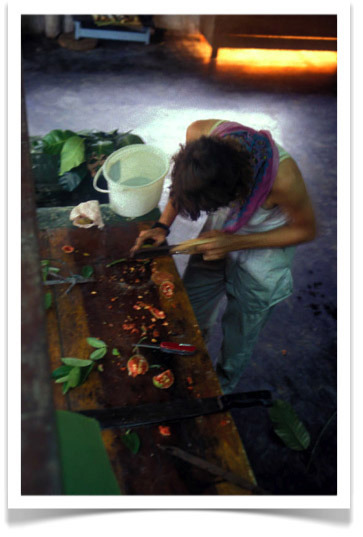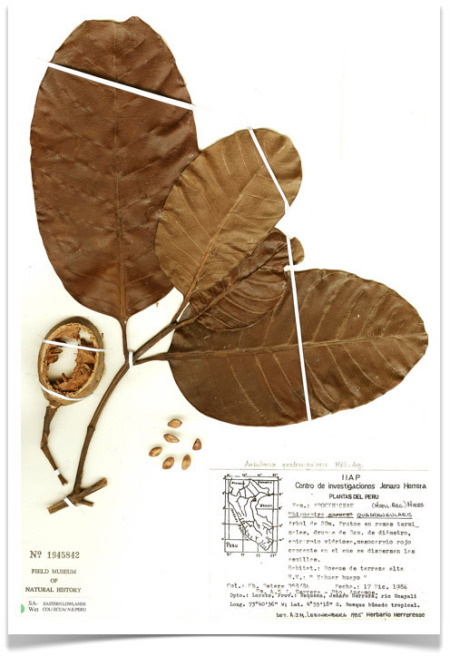Collections Notebook
 Friday, August 23, 2013 at 10:03AM
Friday, August 23, 2013 at 10:03AM 
When you collect an herbarium specimen (see Herbarium Specimens), you need to write down the information about where you collected it, how big the tree was, what color the flowers and/or fruits were, and, maybe, what the plant is used for. You do this because if you don't you will forget these things, and you need the information to fill out the label that goes with the specimen. All botanists carry a collections notebook in the field for recording this information. My collections notebook from the mid- 1980's when I was working in the Peruvian Amazon is shown above.
Couple of things to note if you can make them out in the image. After 28 years, two of the collections, Nos. 183 and 189, still don't have a name. Collections Nos. 186 and 188, a Caryocar and a Couepia were determined by Sir Ghillean Prance, director of the Royal Botanic Gardens at Kew for eleven years and Vice-President for Botanical Science at NYBG before that and the person who hired me. No. 187, a Pourouma (see Uvilla), was determined by the late C.C. Berg, Dutch botanist, great guy, and world expert on the Moraceae, an enormous plant family comprising over 40 genera and 1000 species.
I love looking through all of the stuff that's inside this old collections notebook, but the cover (see below) is also pretty fantastic. Was all that I could find at the time in Iquitos, Peru, but the bunny holding the tulip with the little bird on it seems perfect. [NOTE: I especially like the fact that I drew a moustache on the bunny for some reason].










